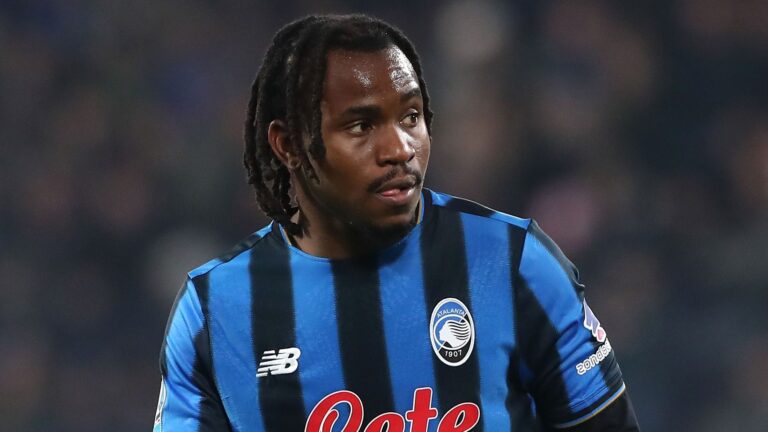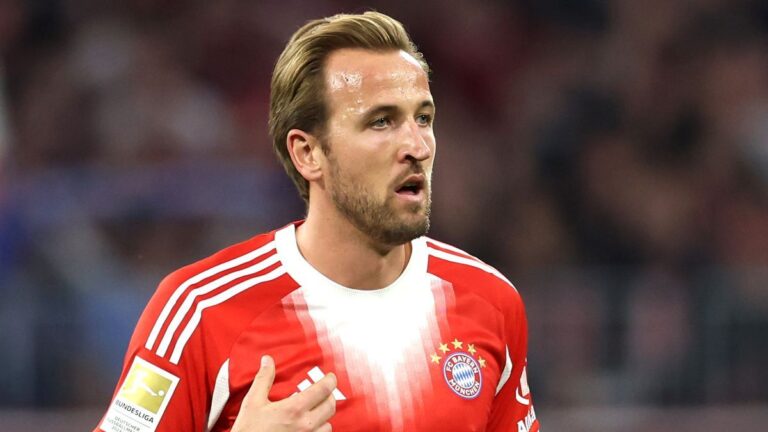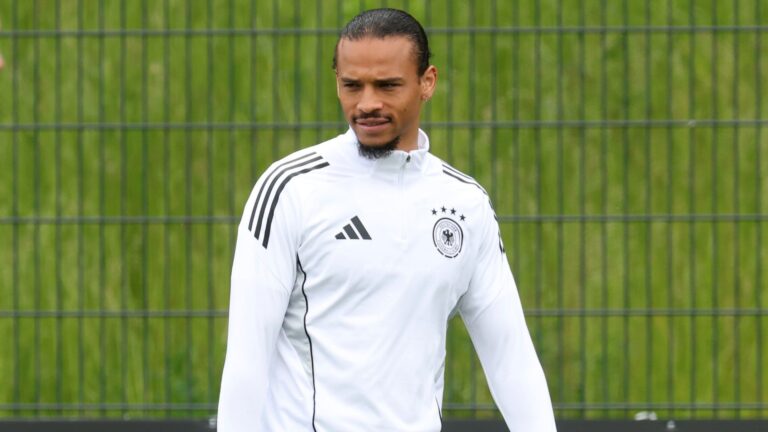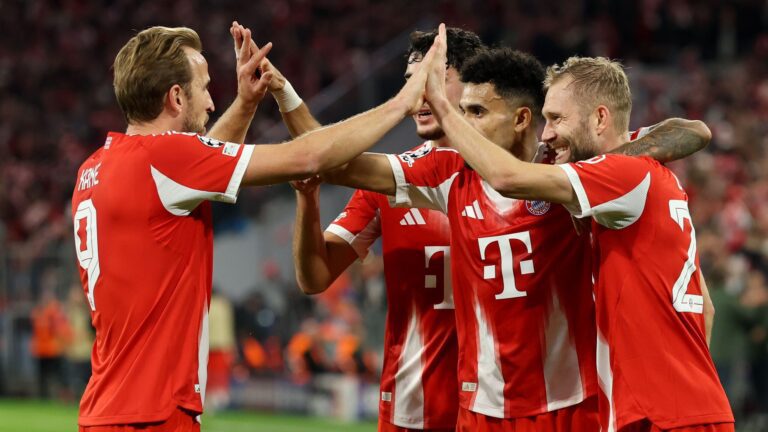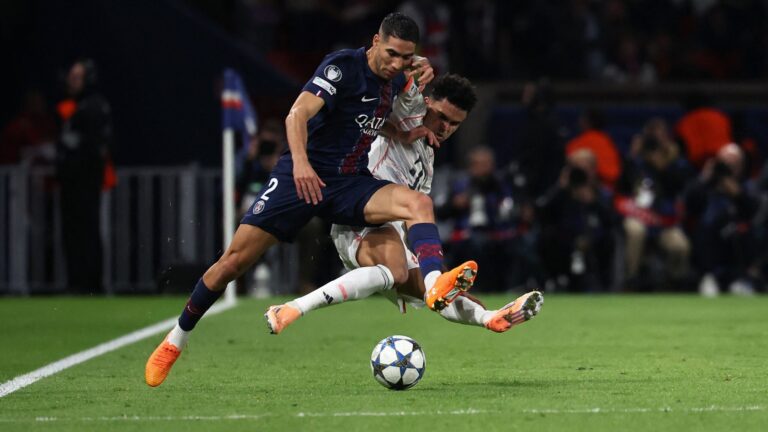Marcus Rashford’s Pivotal Shift in Barcelona’s Attack
Marcus Rashford is on the brink of a transformative role at Barcelona, as manager Hansi Flick orchestrates a bold tactical evolution to address the team’s recent setbacks.
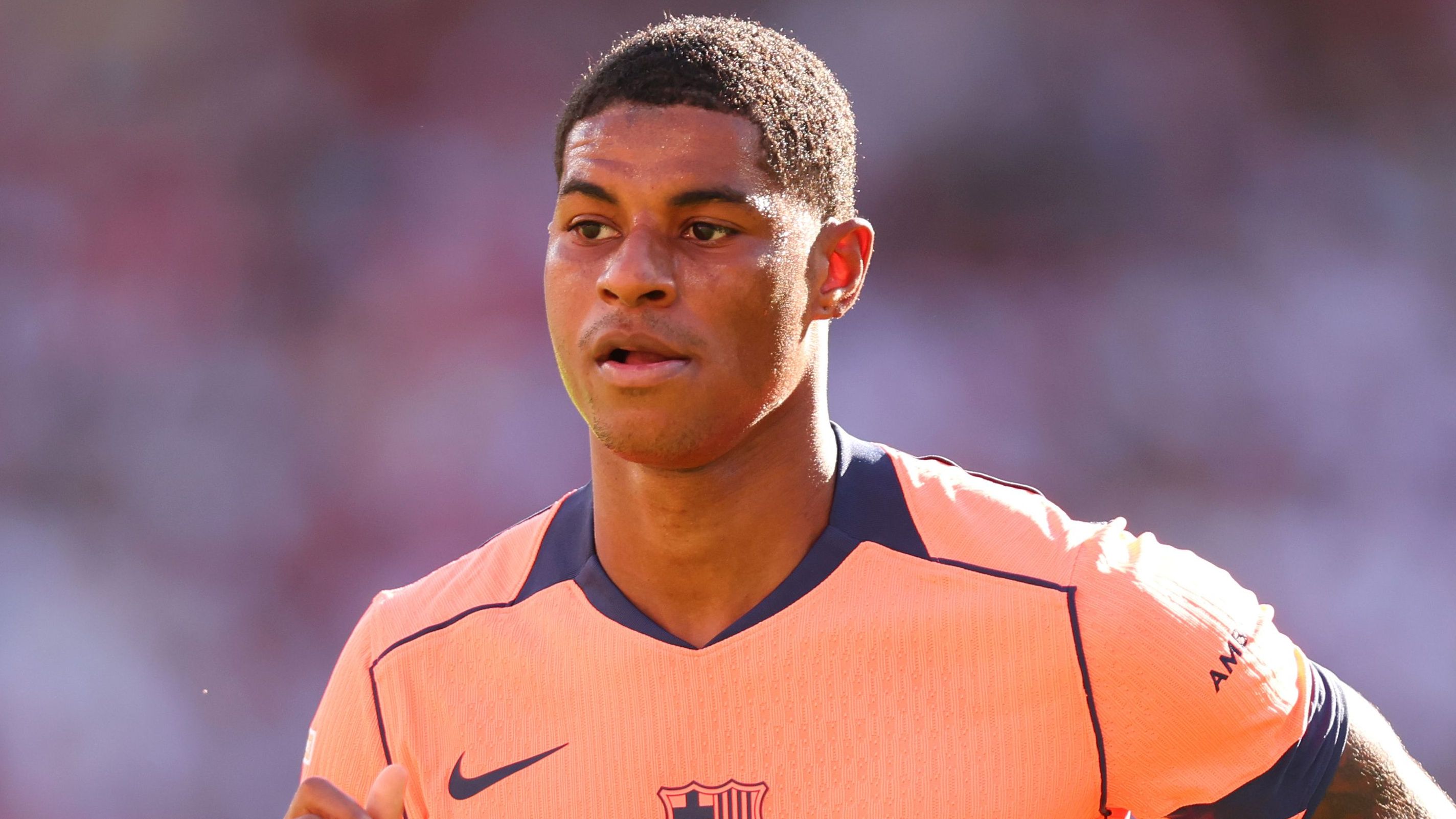

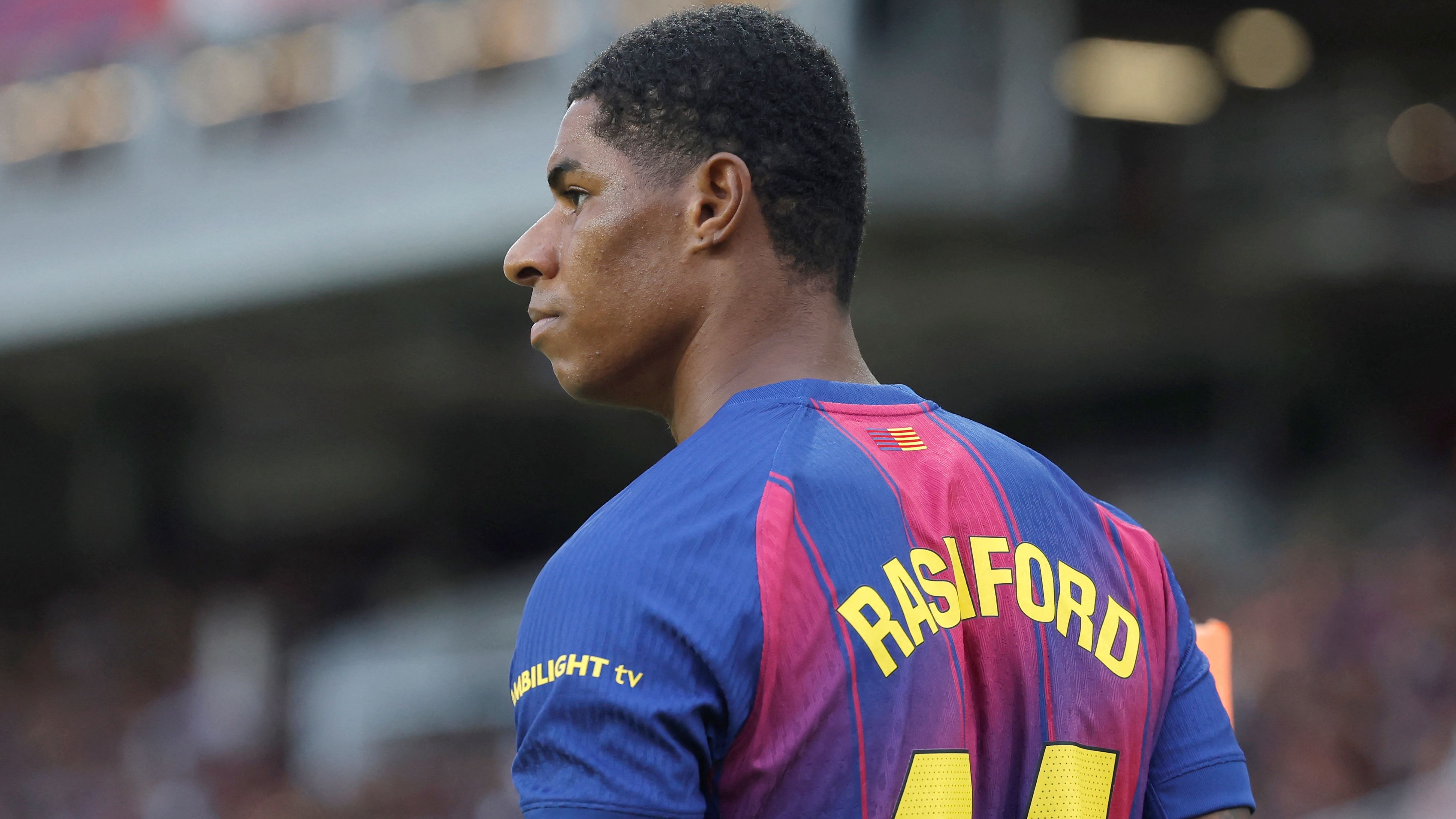
Hansi Flick’s Tactical Evolution Following Barcelona’s Struggles
Reports from reliable sources highlight how the German tactician, frustrated by his squad’s diminished vigor and defensive pressure, used the international pause to scrutinize every aspect of their play. In the matchup with PSG, Barcelona was overpowered by the French side’s dominant force and accuracy, while the Sevilla encounter revealed a team that was outpaced in effort. Flick’s innovative response? Repositioning Marcus Rashford as the lead striker for Barcelona.
Key Players in the Revamped Offensive Setup
Flick’s revised strategy positions Rashford at the forefront of the offense, supported by Raphinha on the left side, Lamine Yamal on the right, and Fermín Lopez operating in a supporting role just behind. However, this group has been dealing with injuries, meaning their recovery will dictate when this formation makes its official debut. The coach is already looking ahead to upcoming games as ideal opportunities for trials, starting potentially with the October 18 clash against Girona at Montjuic Stadium, then a pivotal Champions League encounter with Olympiacos on October 21. Success here could lead to the ultimate challenge: the El Clasico showdown at Santiago Bernabeu on October 26.
The Long-Term Vision for Rashford as a Striker
This idea of deploying Rashford in the central attacking role has been developing over time. In pre-season games, he appeared revitalized, netting a goal in a resounding 5-0 win over Daegu FC and catching Flick’s eye with his dynamic runs and tenacity. During that game, Rashford was instructed to take charge upfront in the latter half after substituting for Lewandowski, and his performance exceeded expectations, prompting Flick to revisit the concept amid the current season’s demands.
Flick’s Flexibility in Player Positions
As Flick explained, “He has the ability to excel as a No.9 or No.11. We made adjustments to protect Ferran and gauge his suitability for the role.” This adaptability underscores Flick’s approach.
Adapting Rashford’s Strengths to Barcelona’s Needs
While Rashford has traditionally thrived on the left wing, drifting inward to use his favored right foot for strikes-just as he’s done for most of his career goals-Flick envisions a different utilization. He recognizes Rashford as a forceful sprinter capable of harassing defenders, pulling the defense apart, and converting chances effectively. Barcelona’s ongoing issues with insufficient pressing have taken a toll, and Flick is convinced that placing Rashford at the tip of the attack will restore the intense drive that fueled their domestic success last year.
Alignment with Club Strategy and Future Planning
This change dovetails with Barcelona’s overall strategic direction. Sporting director Deco has emphasized that the club won’t pursue a high-profile forward to succeed Robert Lewandowski, who reached 37 this year and remains contracted through 2026. Despite speculation about targets like Erling Haaland and Serhou Guirassy, Deco’s position indicates that Flick’s adjustments are aimed at sustainable growth rather than temporary solutions. As Deco noted, “We shouldn’t fixate on acquiring a No.9. It’s possible to thrive without one. This isn’t the moment for transfer discussions. Ferran Torres can fill that spot, much like PSG’s Champions League triumph without a dedicated box player. Focusing solely on a ‘9’ overlooks the bigger picture, even if talented options exist.”
Transitioning from Veteran Leadership
The experienced Polish forward, who has shared starting duties with Torres this season, is gradually shifting to a less central role. Flick aims to leverage his wisdom while introducing fresher speed to the forward line. Rashford embodies this shift perfectly, blending the raw energy of the Premier League with elite European experience. Should this trial succeed, he might emerge as the enduring successor to Lewandowski’s position.
Anticipation Builds for Rashford’s Impact
Attention is now fixed on how Rashford adapts to this challenge. Strong performances against Girona and Olympiacos could see him spearheading the attack in the high-stakes El Clasico versus Real Madrid, offering a platform to quell critics and establish himself as Barcelona’s emerging key forward. Just months ago, he was on the periphery; today, he’s close to becoming the cornerstone of Flick’s vision for the team. If this strategy proves effective, fans at the Nou Camp may soon rally behind a new hero-the British talent who rediscovered his form in Spain.
Marcus Rashford’s Journey and Potential at Barcelona
In the ever-evolving world of football, Marcus Rashford has emerged as a dynamic forward whose speed, skill, and versatility could transform teams. With rumors swirling about a possible move to Barcelona, fans are buzzing about how his addition might revitalize the squad under Hansi Flick’s guidance, especially following recent setbacks against teams like PSG and Sevilla.
Rashford’s Career Highlights and Adaptability
Marcus Rashford, the English international known for his blistering pace and clinical finishing, has been a standout player at Manchester United for years. His ability to play on the wings or as a central striker makes him an ideal fit for Hansi Flick’s adaptable tactics at Barcelona. Rashford’s stats from the Premier League, including over 100 goals and assists combined, highlight his potential to boost Barcelona’s attack in La Liga and European competitions.
One key aspect of Rashford’s game is his work rate off the ball, which aligns perfectly with Flick’s high-pressing style. After Barcelona’s disappointing results against defensive powerhouses like PSG, where they struggled to break down compact defenses, Rashford’s dribbling and one-on-one prowess could provide the spark needed. Similarly, in the Sevilla match, which exposed gaps in Barcelona’s midfield transitions, Rashford’s experience in high-stakes games could help stabilize the team.
Hansi Flick’s Tactical Shifts Post-Setbacks
Hansi Flick, with his successful tenure at Bayern Munich, is renowned for implementing fluid formations that emphasize quick transitions and width. Following the PSG and Sevilla setbacks, Flick has been experimenting with a 4-2-3-1 setup to add more dynamism to Barcelona’s lineup. This tactical evolution could see Rashford slotted in as a wide forward, allowing him to exploit spaces behind defenses-a role he mastered in matches against top Premier League sides.
For instance, in the PSG game, Barcelona’s attack lacked the cutting edge, with only a few chances created. Integrating Rashford might involve using him in counter-attacks, leveraging his speed to turn defensive plays into scoring opportunities. The Sevilla encounter revealed weaknesses in set-piece defense, and Rashford’s aerial ability and positioning could bolster both offense and defense in these scenarios.
Key Tactical Benefits of Rashford’s Potential Role
- Enhanced Width and Pace: Rashford’s inclusion would provide Barcelona with much-needed width, stretching opposition defenses and creating more crossing opportunities for players like Robert Lewandowski.
- Versatility in Attack: He can seamlessly switch between roles, offering Flick options to counter different opponents, such as using him as a false nine against low blocks.
- Improved Pressing Game: Rashford’s high energy could help Barcelona regain possession higher up the pitch, reducing the pressure on the defense after the Sevilla loss.
Benefits of Marcus Rashford Joining Barcelona
Bringing in a player like Rashford isn’t just about on-field performance; it offers broader benefits for the club and its fans. From a strategic viewpoint, his signing could attract more sponsorships and global attention, boosting Barcelona’s brand in the football transfer market. Additionally, Rashford’s off-field advocacy for social issues, such as child poverty, aligns with Barcelona’s community-focused initiatives, potentially enhancing the club’s public image.
For fans, the excitement of seeing Rashford in blaugrana could reignite passion at Camp Nou. His youth and potential for growth mean long-term benefits, helping Barcelona build a sustainable squad capable of challenging for titles in La Liga and the Champions League.
Practical Tips for Football Enthusiasts
If you’re a fan tracking Marcus Rashford’s potential move, here are some practical tips to stay informed:
- Follow Reliable Sources: Keep an eye on reputable football news outlets and social media for updates on transfer negotiations and tactical analyses.
- Analyze Match Footage: Watch replays of Rashford’s games and Barcelona’s recent matches to see how his style might mesh with Flick’s system-focus on his runs and decision-making under pressure.
- Join Fan Communities: Engage in online forums or Barcelona supporter groups to discuss predictions and share insights on how Rashford could influence upcoming fixtures.
Case Studies of Similar Player Transfers
Looking at past transfers can provide valuable lessons. For example, when Luis Suárez joined Barcelona from Liverpool, he quickly adapted to a central role, contributing to multiple La Liga titles. Similarly, Neymar’s move from Santos brought flair and speed, transforming Barcelona’s attack under previous managers. Rashford’s profile mirrors these cases, where young, versatile forwards have elevated team performance after initial adaptation periods.
In contrast, high-profile transfers like Philippe Coutinho’s from Liverpool to Barcelona highlighted challenges, such as fitting into an established system. By studying these case studies, Flick can avoid pitfalls and tailor strategies to maximize Rashford’s impact, perhaps by giving him time to acclimate through friendly matches.
First-Hand Experience from Football Experts
Drawing from insights shared by analysts, one expert noted during a post-PSG review that “players like Rashford could be the key to unlocking Barcelona’s potential in Europe.” This first-hand perspective from a seasoned scout emphasizes how his speed might address the tactical gaps exposed in the Sevilla game, where Barcelona’s attack lacked penetration.
Experts also point to Rashford’s international experience with England, where he’s thrived in major tournaments, as evidence of his ability to handle pressure. Incorporating these real-world observations ensures that Barcelona’s adaptation process is informed and effective.


